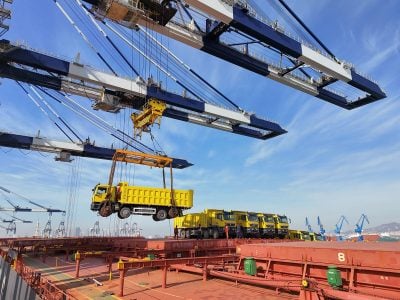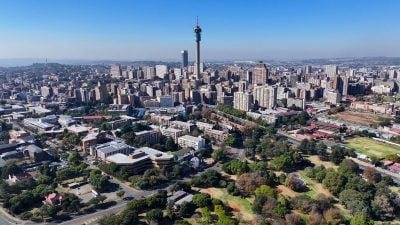New technology and the rise of renewables are changing
Africa’s energy sector, creating opportunities for companies to
capitalise on the continent’s power gaps, writes Shoshana Kedem.
Ageing infrastructure and power shortages have long been an
obstacle to energy projects in Africa.
But these challenges, along with Africa’s growing energy demands, are driving development in global renewable energy such as liquefied natural gas (LNG) and solar micro-grids, according to Jamie Shepherd, CEO of Altaaqa Global Energy Services, the Dubai-based provider of integrated energy solutions.
“Energy is an exciting place to be at the moment,” he said. “It’s changing very rapidly from a technology point of view; the market in Africa is very opportunistic.
“Compared to Europe or North America, there’s huge latent demand from unconnected people and there’s lots of very clever solutions you can come up with to deliver sustainable power projects across Africa. That’s exciting.
“You get to do a lot of firsts in Africa, such as the first hybrid project, so I see the continent very much as a frontier.”
Micro-grid revolution
Dispersed populations, gaping infrastructure gaps, and insufficient grid scale and capacity, leave swathes of the continent without access to central power grids. This is driving demand for smaller-scale, decentralised off-grid solutions, such as solar micro-grids.
These cheap, clean energy sources will play a growing role in solving
future capacity shortages, powering rural pockets and driving intercontinental connectivity, said Shepherd.
“Micro-grids are really what’s going to push connectivity of Africa going forward. With government resources for infrastructure projects limited, private companies are leading the charge in bringing micro-grids and the technology they need to function to rural parts of the continent.
“Turning to micro-grids is the only way the large population of unconnected people throughout the continent can become connected because governments are facing challenges in terms of funds to spend on massive infrastructure projects like that,” said Shepherd.
“What’s really interesting about that model is that not only are they driving electricity, they provide Wi-Fi and crop irrigation, even chicken hatchlings that they can brood using electric bulbs and sell at market, so it almost becomes a self-sustaining economy.
“The idea is to increase the economic benefit. It’s not just a micro-grid, it’s a micro-economy, and that will be a real driver for the significant part of Africa that’s not connected.”
Connecting the continent
Micro-grids will also play a key role in connecting main power grids on the continent from Southern Africa’s Power Pool to those of West, Central and East Africa, he said.
The scramble for intercontinental connectivity is driving investment
opportunities in transmission and distribution networks, said Shepherd.
“Interconnection of the main grid units in Africa and the ability to move electrons around the continent are the big areas for development at the moment, areas that are going to drive real change.
“In terms of connectivity rising from 54%-56% to 80%, we’re going to have to see more distributed power at micro-grids, private industry coming in to build a network and then eventually the main network will catch up and become connected to it.
“Where there is excess power in one area and a deficit in the other, they can’t transmit it like they do in Europe and North America.
“Where there is an abundant natural resource – such as gas in Mozambique or Tanzania – they can’t deliver the electrons to other parts of Africa because there isn’t the connectivity. So I think connectivity of the grids is going to be a big play.”
Tech Rising
Technology is also leading the way in transforming Africa’s energy
sector, according to Shepherd, as its emerging, developing and frontier markets are able to leapfrog old technology to adopt the latest
innovations from the outset.
“Africa skipped landlines in telecoms and went straight to mobiles.
African power has also skipped to much higher efficiency engines and turbine,” he explains.
Many of these advances are helping to solve the massive latent demand for energy on the continent, where a significant percentage of the population live without access to a grid.
For the energy sector, utilities are a “real challenge”, not only in terms of capacity, but also because they can often be a bottleneck when it comes to fast-tracking energy projects on the continent, said Shepherd.
In many countries, older power plants are coming to the end of their life and there’s still a very high dependency on hydropower, which may at times be unreliable is unreliable given the changes in the environment, especially in East Africa where every two to three years the rains don’t hit, said Shepherd.
Limited public resources to overhaul ageing power plants and energy infrastructure has led to an uptick in private companies being tapped to
privatise public utilities, as seen in Nigeria where Transcorp Power Consortium won a $293m bid to privatise Nigeria’s Afam gas and power plant.
The move will add 1.4GW to fire the electricity-starved nation, where power generation peaked just below 4.5GW in February, with a maximum capacity of 7.65GW. South Africa, with a population a third of Nigeria’s, has a capacity of more than 47GW.
“I can see that there’ll be a lot more public-private partnerships coming
on and governments will look to private investors to come and run a grid,” said Shepherd.
New wave of LNG
Africa is also on the cusp of a LNG boom, with a surge in companies trying to use LNG-to-power to solve sub-Saharan Africa’s electricity woes.
Making it work is proving to be a hard nut to crack though, said
Shepherd.
The ability to import LNG into South Africa or Mozambique and either inject it into the network or use it to produce low-carbon, cheaper electricity will be a “game-changer”, especially in solving the government’s widening transmission losses, he said.
“No one’s cracked it [importing LNG] yet. There’s a few companies trying and they are close. If someone could bring LNG into the Eastern Cape of South Africa that would make a phenomenal difference in terms of transmission losses that Eskom has, because all its power generation is in the north and all its load sensors are in the southern and eastern parts of the country, and there’s 2,000 miles between them.”
Solar technology on the grid side is becoming increasingly widespread in meeting the burgeoning consumer and technological demands of the
continent. But the industry is held back by limited battery storage technology.
“There’s a limit on how far you can go with solar until battery tech catches up and you can get mass battery storage,” said Shepherd.
“Eskom has 6GW of wind and of solar, but on Saturday and Sunday it dumps it on the grid for free because no one wants it. It’s expensive power, but on Monday morning they’d love to have that power stored.
“Battery technology is going to be a big driver to see that continue. Solar and wind will always be part of the energy mix, of course, but you still need your gas turbines and your coal-fired power stations to run the baseload in these equations.”
In the coming years, energy companies will be holding their breath for breakthrough advances in battery technology, he said.
“Everybody’s watching what will happen and what’s the right technology. A lot of the battery tech will be driven by what car manufacturers do.
“What I think will happen is a lot of second-life batteries will come out
of the automotive industry from the likes of BMW and Tesla and will
go into the power generation industry as a second life solution as
no one has yet figured out what to do with them.”
Want to continue reading? Subscribe today.
You've read all your free articles for this month! Subscribe now to enjoy full access to our content.
Digital Monthly
£8.00 / month
Receive full unlimited access to our articles, opinions, podcasts and more.
Digital Yearly
£70.00 / year
Our best value offer - save £26 and gain access to all of our digital content for an entire year!
 Sign in with Google
Sign in with Google 


